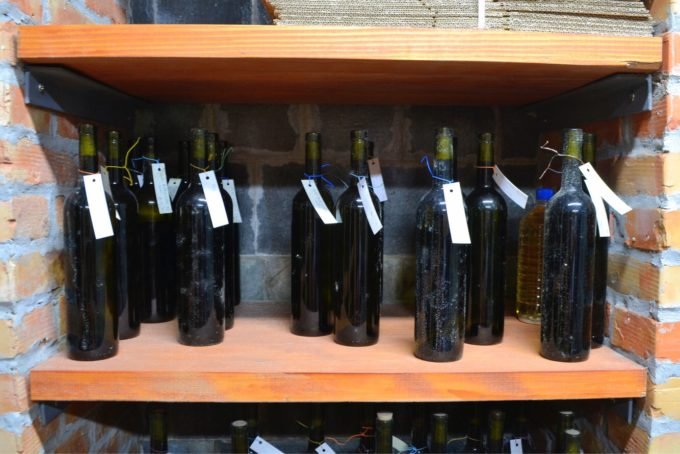
Drinking Wine from the Spit Bucket: Unsophisticated or Innovative?

Drinking Wine from the Spit Bucket: Unsophisticated or Innovative?
Wine in Fruška Gora, Serbia
Serbia isn’t famous for its wine culture, but as I sampled my way through Novi Sad’s annual wine festival, I realized I had perhaps been a little ignorant. Unable to read Serbian, it was lucky that I stopped at the University of Novi Sad’s booth. Jelena, a PhD student, poured me a generous sample of wine and chatted with me about their experimental vineyard. Within minutes I had received an invitation to a midweek, pre-noon education on Serbia’s wine-making resurgence.
I hadn’t been out of Novi Sad in weeks, and leaving the city for the gentle hills of Fruška Gora felt like an adventure. When we got to the vineyard, Jelena showed me how the vineyard was set up so university students could practice different pruning techniques. It was early in the summer, so the grapes were hard little marbles, a green so bright it made my mouth pucker to look at them.
The road to the organic section was flooded, which meant I couldn’t see the experimental fungal-resistant hybrids. Maybe it doesn’t sound glamorous, but it’s pioneering work. Grapes are grapes to me, though, and it just meant that we could start sampling even earlier. Jelena introduced me to Sinisa, the winemaker, and we stepped through his lab onto a porch overlooking the vineyard.
It wasn’t even noon yet, but the bottles started coming out. There was the Red Wine of the Faculty, a blend distributed by the university. And bright, high-acid whites that drew wine enthusiasts from around Europe. But Sinisa’s obvious pride was a vintage made solely from the local probus grape, creating a wine that was more galactic purple than red. As I savored the dry plum notes, Sinisa told me I was one of maybe a dozen Americans who had tried it.
Jelena was the only one really pouring her unfinished wine out into the spill jar—“I have to drive,” she said—but the alchemy of reds and whites had created a seductive burgundy blush in the beaker. Wine enthusiasts and viticulturists might fancy themselves a classy bunch, but Jelena told me a story of conducting a wine tasting class for a group of university students. She had stepped out of the room for a minute, and when she came back the students were drinking out of the spill jar.
“They were supposed to be learning how to be sophisticated,” she complained, but I think she could see the temptation. When you run an experimental vineyard, curiosity is a valued trait.
The conversation floated from wine to politics to legacy. Certain regions in Serbia used to be internationally known for their high-quality wine, but the arrival of communism and collective vineyards dismantled the wine culture. The focus became quantity over quality, and the experienced winemakers grew so disgusted with the corruption of their craft that they abandoned the art altogether. Now, the younger generation is attempting to recapture what was lost.
But if former glory was what they were after, why even bother with something new? I asked, thinking about the hybrid grape varieties they’ve been working on for nearly two decades.
Sinisa just shrugs. “The world will stop if you don’t experiment.”
That still didn’t convince Jelena to taste-test the spill jar.
Karlovackih djaka 35, Sremski Karlovci, Serbia.
6 a.m-2 p.m.